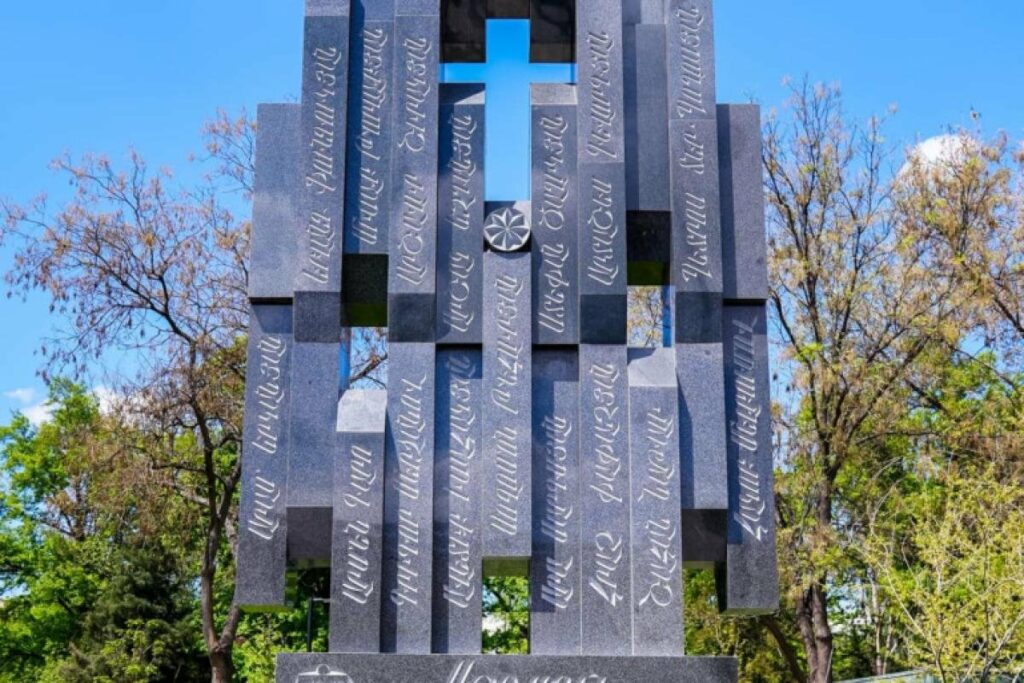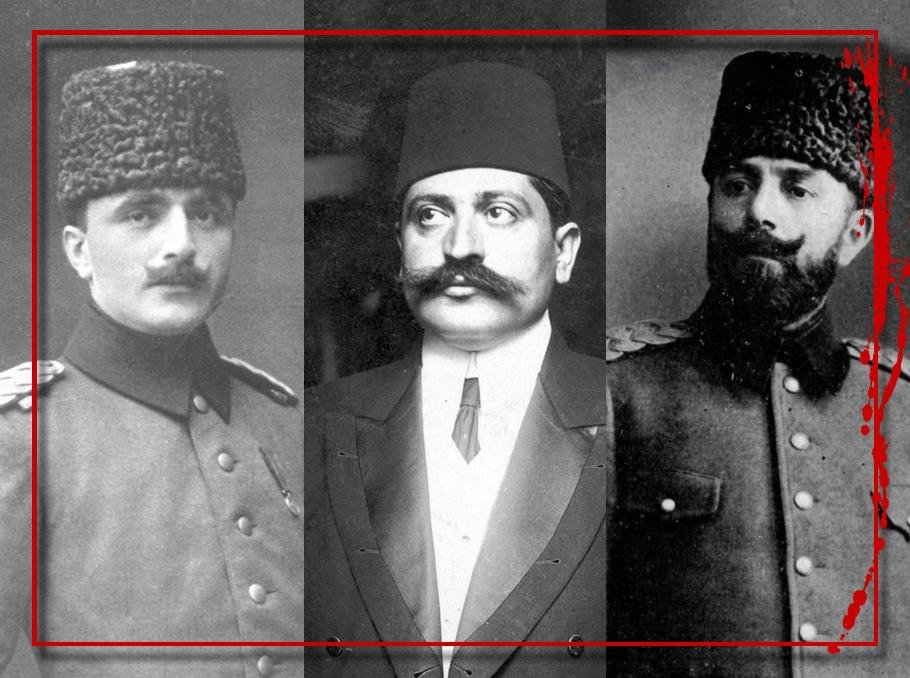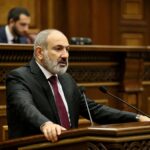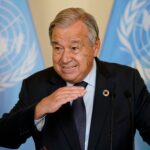The recent unveiling of a fountain memorial dedicated to the participants of Operation Nemesis in central Yerevan is a chilling reminder that the plot’s key mastermind Shahan Natalie’s century-old assertion that “over and above the Turk, the Armenian has no enemy, and Armenian revenge is just and godly” has never ceased to be true for many of his countrymen, reverberating with vehemence undimmed in the collective consciousness of the nation.
Revenge is a strong poison. It may well be addictive to seek it on its own merits as it gives a self-appointed avenger, amongst other factors, a sense of pleasure that is hedonistically rewarding and somewhat cathartic. It is this very gruesome dark side of the vengeance-seeking mind that pervaded the air like the stench of a charnel house during the inauguration ceremony of the monument glorifying those who committed a series of assassinations against the former leading figures of the Ottoman Empire and the Azerbaijani Democratic Republic in 1920-22, under the stewardship of the Armenian Revolutionary Federation (ARF), Dashnaktsutyun party. It was an act of jubilation and a celebration of terror.

One of the initiators of the installation, Artyom Yerkanyan, a descendant of Aram Yerganian who was one of the historic assassins, in a speech delivered at the foot of the monument, stated that had it not been for Operation Nemesis, “we would be a sick nation, suffering from psychological complications”, and, therefore, the “avengers” could be compared to psychiatrists who made the nation feel worthy, imbued with pride.
This statement is reflective of something very poignant – in what was, in effect, a series of unlawful extrajudicial killings ruthlessly executed within the framework of a terrorist scheme, Armenia finds solace and relief, believing that, had the infamous operation not been implemented, it would have been hopelessly deranged. What is more tragic, however, is that not only is the justification offered by Yerkanyan puerile, despite being collectively embraced but also false, for the “psychological complications” to which he refers, have not been consigned to the inglorious refuse can of history, instead being further entrenched through the continuous celebrations of the “avenger-psychiatrists”. This is a vicious cycle with no consummation prospect in sight.
The narrative employed has its nuances and carefully stitched-up design, predicated on the concept that Operation Nemesis was not just morally right, but legally somewhat permissible, as the assassins were not terrorists but, in the words of Yerkanyan, “the executors of a just verdict that was given by a legitimate court”. The reference here is made to 1919-20 Turkish court-martials, established by the Ottoman government under the threatening pressure of the Allied Powers, being deemed as mock tribunals with the political purpose of expediently punishing the Unionist leaders of Türkiye without any regard to due process. They were effectively disbanded with the rise of the Resistance Movement in Ankara and the British attempt to establish an international tribunal in Malta failed to be of any discernible consequence.
Another vital element in the narrative is the trial of Soghomon Tehlirian in Berlin in 1921 and the appropriation of the court’s verdict, which acquitted the accused, for justifying the moral grounds for Operation Nemesis. The key point was whether the murder of Talat Pasha, the former Grand Vizier of the Ottoman Empire, on 15 March 1921, was a premeditated act. Tehlirian, as later revealed, told the jury a twisted story incorporating myriad fabrications, in which he described himself as a man bedeviled with personal traumatic experiences of the events of 1915 in eastern Türkiye, phantasmagorically haunted by his mother’s ghost who scolded him for ignominiously failing to do his duty of avenging the nemesis, leading him to shoot Talat Pasha.

His lawyers presented his state of mind at the time as being akin to temporary mental insanity invoked after accidentally coming across the aforementioned personage. In fact, the act was undeniably premeditated, as Tehlirian, who earlier committed the murder of Haroutiun Mugerditchian, an Ottoman loyalist, in 1919, was an experienced ruthless assassin and located in Berlin with the sole purpose of hunting down his victim, carefully observing him at close proximity for some time as part of a covert plot undertaken by the ARF.
The verdict was, in its essence, logic-defying and later incorporated into falsified Armenian historiography as a pivotal moment of truth, further operating as a vindication for the subsequent killings of Turkish diplomats by terrorism, in particular, between 1973-86. Tehlirian, one of the key members of Operation Nemesis, has since been hailed as a hero in Armenia, the emblematic representation of this being a statue erected in the town of Maralik in late August 2019 which depicts him striking a heroic pose, whilst wielding a pistol and stepping on the severed head of Talat Pasha.
When, during the unveiling of the Operation Nemesis monument in April of this year, some of the gathered admirers shouted “We need more Soghomons”, it was as if Armenia’s collective reward circuit – the nucleus accumbens – were rewired like an arsenal of nitroglycerin with a naked desire for further reckless retribution. It should also not be forgotten that the project was sanctioned by the Armenian government and actively supported by public intellectuals, cultural figures, and academicians.
The thread is seamlessly preserved: when the idea of avenging the Turks for the alleged events of 1915 was introduced in the 8th Congress of the ARF, held from 27 September to the end of October 1919, it appeared to be an intellectual effort. Despite its debased premise, it is still deemed to be a vision shared, not just by the more militant segments of Armenia, but also by its elites, including large swathes in the present government of Pashinyan, whose declared intentions of normalizing relations with Türkiye and concluding a peace deal with Azerbaijan leave much to be desired in the indefinable department of earnestness.
Operation Nemesis did not merely target Ottoman-Turkish officials, but also the leading figures of the Azerbaijani Democratic Republic, with Fatali Khan Khoyski, Hasan Bay Aghayev, Behbud Khan Javanshir, and Nasib Bey Yusifbeyli being among the victims. This bloody assassination programme and its continuous glorification are concentrated in Armenia’s deep-rooted, self-righteous, deluded xenophobia against anything and anyone Turkic.
The unveiling of this monument to hatred is a new fragment in the old story of incorrigible adherence to the ideas of “victimhood” and “mythological predestination”, where terrorism motivated by political objectives continues to be deemed as a legitimate course of action. It is exactly under the strenuous weight of these sheer impossibilities and the constant desire for revenge that modern Armenia has been creakingly cracking, to date.
Neil Watson, British Journalist, recalled; “Joseph Goebbels, Nazi Propaganda Minster, appositely stated, ‘Repeat a lie enough, and it becomes the truth.’ Armenians have spent over 120 years repeating their lies and living under delusions of victimhood, continually reinforcing their self-justification for terrorism and expansionism. They have also tried to delude the world via the machinations of their egregious diaspora. But they are failing, and the rule of international law will pervade.”
Orkhan Amashov
Caliber.Az










